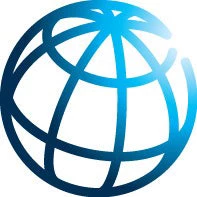The Millennium Development Goals (MDGs) recognize that expanding international trade can help developing economies achieve the MDGs by fostering economic growth and increasing job opportunities. At the 2000 Millennium Summit developed countries agreed to increase market access for developing countries by lowering tariffs and granting tariff-free access to all goods (except weapons). They also agreed to increase aid for promoting trade and to decrease domestic agricultural subsidies that harm imports from developing economies.
The World Development Indicators 2010 reveals that the impact has been varied depending on region. For example, trade services grew rapidly in both Europe and Central Asia and Latin America and the Caribbean, but has declined in the Middle East and North Africa which also saw a dip in GDP growth.
Trade services in Europe and Central Asia is growing rapidly
Europe and Central Asia’s nominal value of trade in services grew at an average annual rate of 24 percent for 2005-2008, which was above the regions’ historical growth of trade in services and greater than the growth rates of all other regions, including high-income economies. Growth of trade in financial services and transport services has been the most remarkable. Almost all countries in the region experienced average annual growth of 15 percent or more, lead by Kyrgyz Republic (33 percent), Romania, Tajikistan, and Azerbaijan (28 percent each).
Despite the rapid growth, the total value of trade in services remains small, equivalent to 15 percent of the regions total trade and 10 percent of GDP. East Asia and Pacific remains the largest player, accounting for 32 percent of the service exports and 33 percent of the service imports of developing economies in 2008. Europe and Central Asia is the second largest service trader, accounting for 4 percent of services exports and 24 percent of service imports by developing economies in 2008.

Trade with other developing economies has increased in Latin American and the Caribbean
The Latin America and the Caribbean region is the third largest exporter and importer of merchandise among all developing regions. Sixty four percent of the region’s exports in 2008 were directed to high-income economies and 60 percent of imports came from high-income partners. However, these shares have been declining for the last ten years. In 2008 19 percent of the regions’ merchandise exports went to other developing economies in the region, and 11 percent were directed to developing economies outside the region.

Trade slows down and with it, so does GDP growth in the Middle East and North Africa
GDP growth in Middle East and North Africa dropped to 5.5 percent in 2008 on lower oil prices and exports to Europe. It is expected to drop further in 2009 as the full effects of the global financial crisis are felt. Developing oil exporters in the region, Algeria, Islamic Republic of Iran, Syrian Arab Republic, and Republic of Yemen, suffered from drops in both the price and volume of oil exports. More diversified economies, Egypt, Jordan, Lebanon, Morocco, and Tunisia, were affected by declines in external demand from high income economies, especially the Euro Area, as exports, tourism, and remittances fell.

According to the 2009 Logistics Performance Index Surveys, the performance of South Asian economies is below the average of all developing economies. The overall logistic performance index for the region was 2.5 in 2009, while the average rating for all developing economies was 2.6. There have been slight improvements in the overall logistics performance of all regions since 2006.

South Asian economies did particularly well in shortening lead time and import and export compared to other developing economies. Between 2006 and 2009 lead time to export was reduced from 4 days to 2 days. Lead time to import was reduced from 7 days in 2006 to 3 days in 2009. In other aspects of logistics performance, however, the South Asia did poorly compared to other developing regions. Ratings for customs efficiency, infrastructure quality, transport costs, and trackability and timeliness of shipments were consistently below the developing economies’ averages. According to the 2009 Doing Business survey, 9 documents were needed, on average, to export and import, while other developing economies required an average of 7 to 8 documents.
The world today is a more integrated place – with world exports of goods and services nearly tripling between 1990 and 2007 and foreign direct investment increasing ninefold between 1990 and 2008. Developing economies’ trade has expanded from 17.3 percent of world exports and 17.0 percent of world imports in 1990 to 28.1 percent of exports and 25.9 percent of imports in 2007.


Join the Conversation